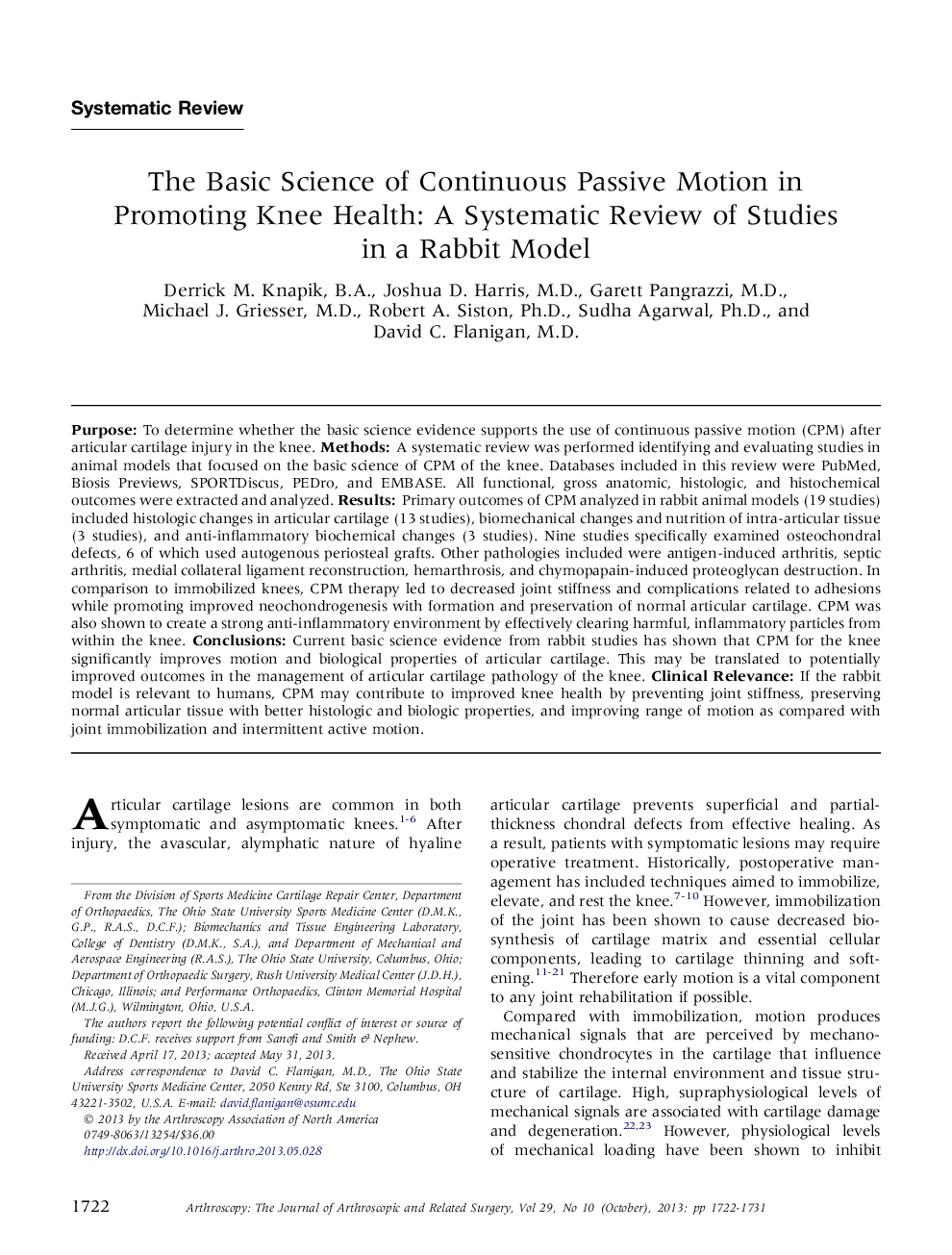| کد مقاله | کد نشریه | سال انتشار | مقاله انگلیسی | نسخه تمام متن |
|---|---|---|---|---|
| 4043059 | 1603505 | 2013 | 10 صفحه PDF | دانلود رایگان |

PurposeTo determine whether the basic science evidence supports the use of continuous passive motion (CPM) after articular cartilage injury in the knee.MethodsA systematic review was performed identifying and evaluating studies in animal models that focused on the basic science of CPM of the knee. Databases included in this review were PubMed, Biosis Previews, SPORTDiscus, PEDro, and EMBASE. All functional, gross anatomic, histologic, and histochemical outcomes were extracted and analyzed.ResultsPrimary outcomes of CPM analyzed in rabbit animal models (19 studies) included histologic changes in articular cartilage (13 studies), biomechanical changes and nutrition of intra-articular tissue (3 studies), and anti-inflammatory biochemical changes (3 studies). Nine studies specifically examined osteochondral defects, 6 of which used autogenous periosteal grafts. Other pathologies included were antigen-induced arthritis, septic arthritis, medial collateral ligament reconstruction, hemarthrosis, and chymopapain-induced proteoglycan destruction. In comparison to immobilized knees, CPM therapy led to decreased joint stiffness and complications related to adhesions while promoting improved neochondrogenesis with formation and preservation of normal articular cartilage. CPM was also shown to create a strong anti-inflammatory environment by effectively clearing harmful, inflammatory particles from within the knee.ConclusionsCurrent basic science evidence from rabbit studies has shown that CPM for the knee significantly improves motion and biological properties of articular cartilage. This may be translated to potentially improved outcomes in the management of articular cartilage pathology of the knee.Clinical RelevanceIf the rabbit model is relevant to humans, CPM may contribute to improved knee health by preventing joint stiffness, preserving normal articular tissue with better histologic and biologic properties, and improving range of motion as compared with joint immobilization and intermittent active motion.
Journal: Arthroscopy: The Journal of Arthroscopic & Related Surgery - Volume 29, Issue 10, October 2013, Pages 1722–1731